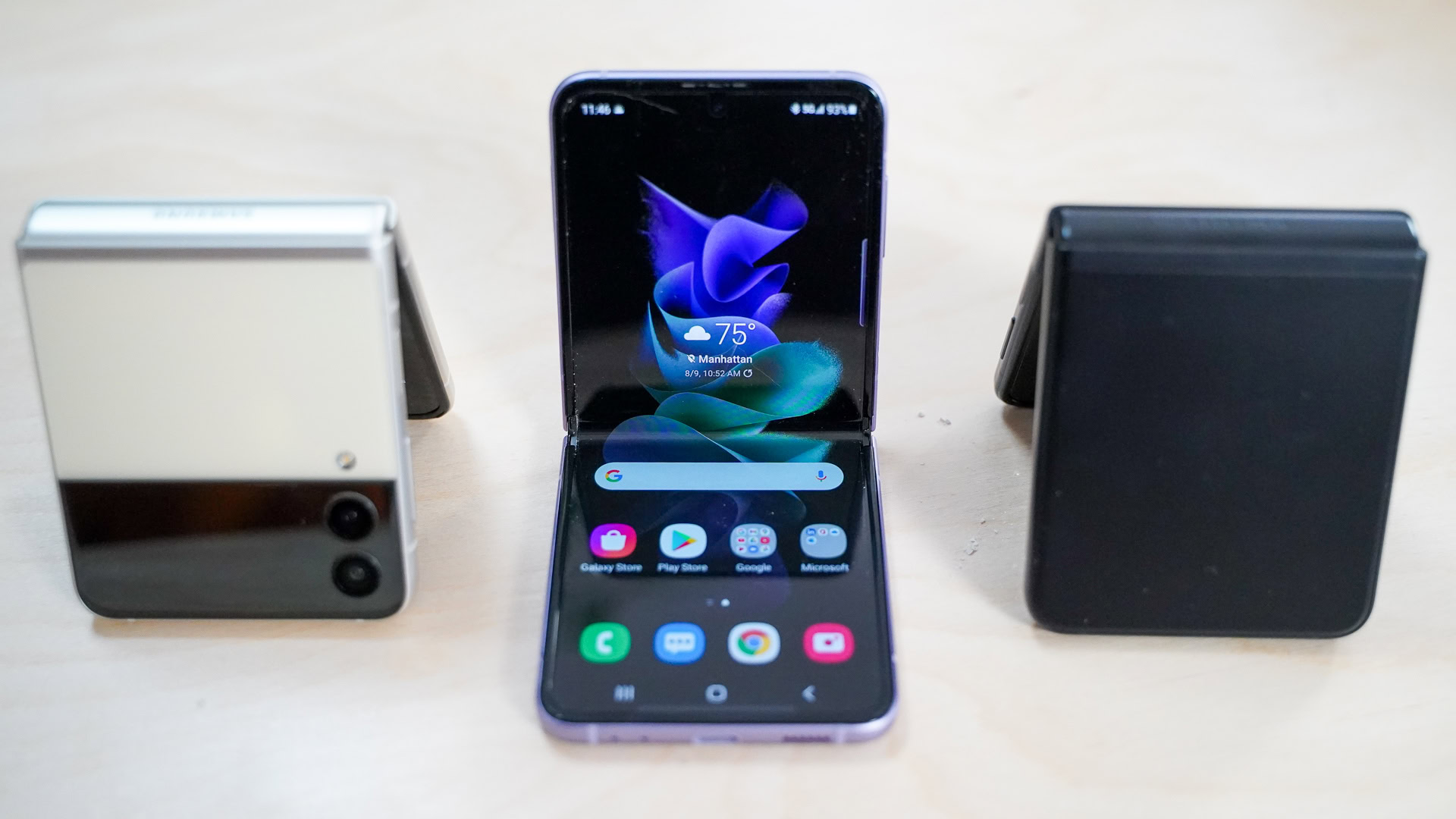Affiliate links on Android Authority may earn us a commission. Learn more.
Samsung Galaxy Z Flip 3 revisited: The good and the bad over six months later
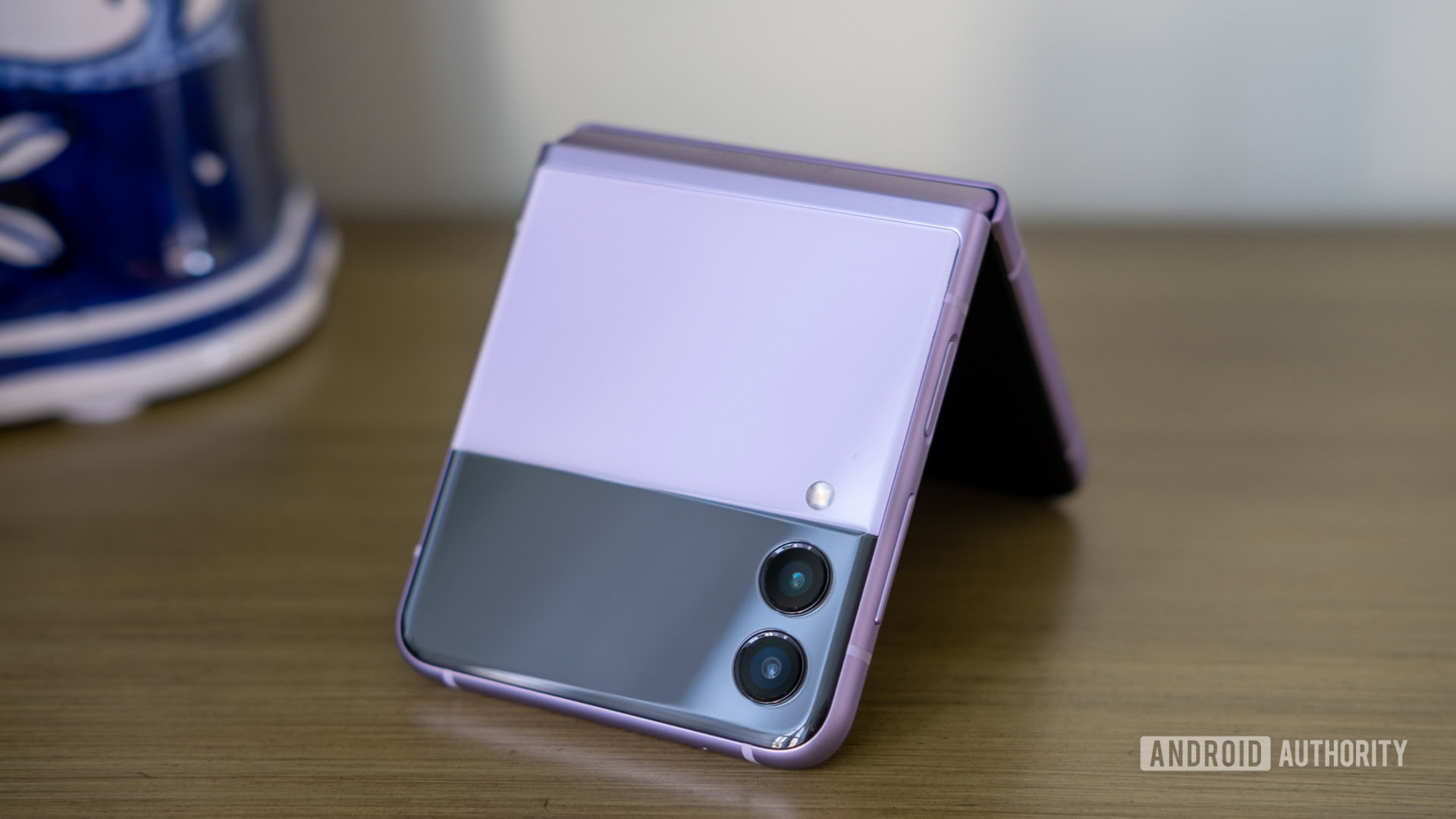
Samsung’s decision not to launch a Galaxy Note device in late 2021 pushed its third-generation foldables to the center stage. While the higher-profile Galaxy Z Fold 3 had some pretty big shoes to fill as the power user option, the more compact and more affordable Galaxy Z Flip 3 found itself aiming for the mainstream. But how has the Samsung Galaxy Z Flip 3 held up over half a year after launch? It’s time to revisit a foldable that we initially declared was “worth taking a chance on” to see if that’s still the case in our Samsung Galaxy Z Flip 3 review revisited.
The good
Samsung’s Galaxy Z Flip 3 earned four out of five stars as well as our Recommended award in our original review, which means it had quite a lot going for it at launch. It shouldn’t come as a surprise that the last six months or so have been kind to the foldable. In fact, it remains the class leader among clamshell-style devices, even with others jumping into the fray.
Design and display
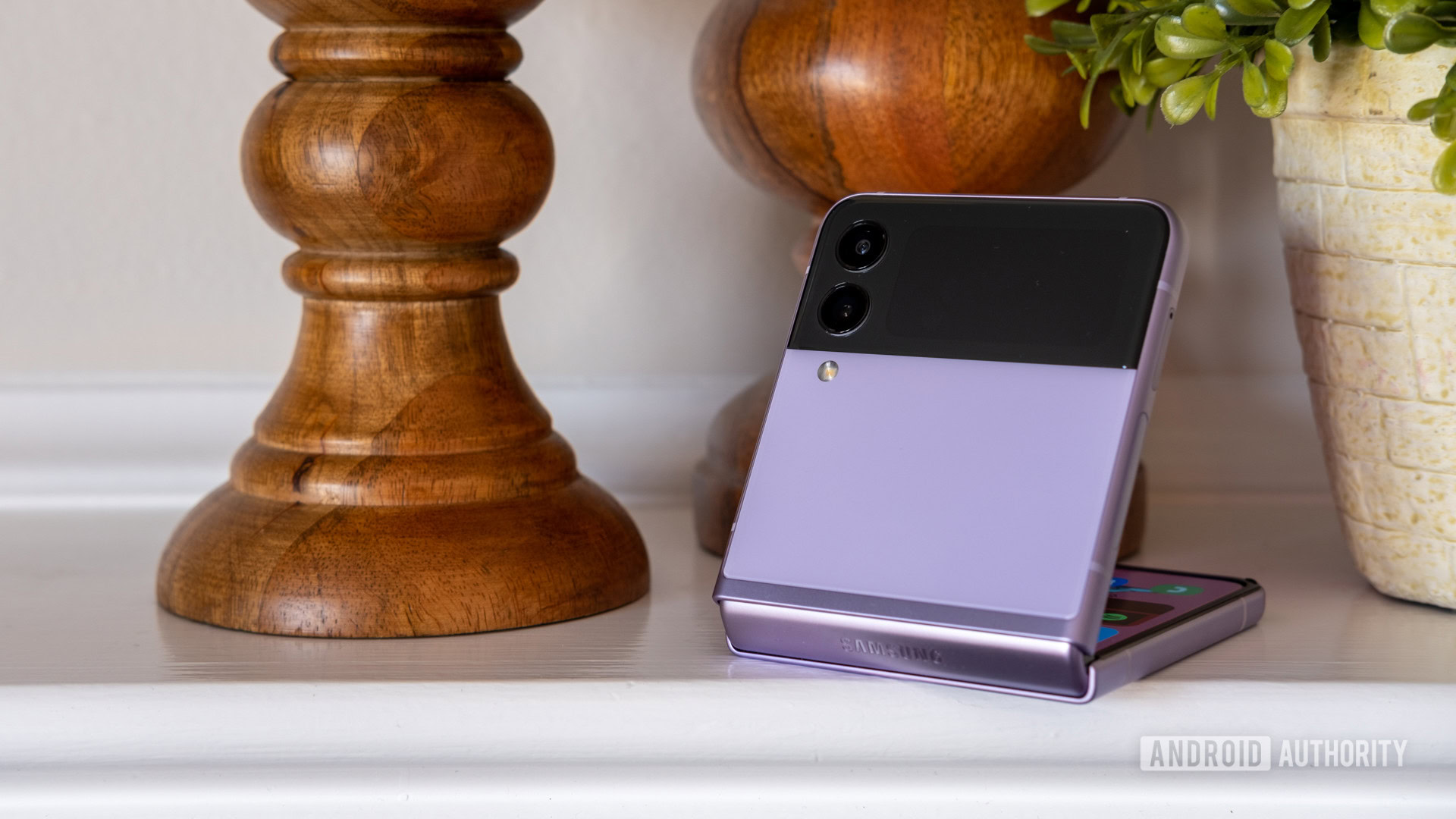
Samsung didn’t reinvent the wheel for its third generation of the Galaxy Z Flip, but it did raise the design to a new level. The display remained the same at 6.7 inches, and you can still see the crease, but the entire package feels much more ready to go the distance. It’s holding up well after over six months and still feels cutting-edge.
The addition of an official IPX8 rating for water resistance is a nice touch, but keeping dust at bay remains the bigger concern — particles can still cause damage if they find their way into the hinge and under the display. I’ve been careful so far, though each creak of the display makes me nervous.
Perhaps the most noticeable changes come when the phone is folded. The external display is larger and more useful than ever. I used it to check most of my notifications and add widget after widget. A few more popular widgets include music playback, a timer, and the weather, but new options keep launching. The external display is still handy today, perhaps even more so as I learn to save my precious battery life (more on that later).
Samsung's refined design still feels ready for everyday life — just not for dust.
As for the internal display, the 6.7-inch foldable panel picked up a few extra pixels and a smooth 120Hz refresh rate. It transitions smoothly from one app to the next and hasn’t lost a step since launch. However, the crease is still noticeable right there in the middle. I wouldn’t say it’s gotten any worse in my usage though, and I’ve learned to ignore it.
Samsung flattened the edges on its Galaxy Z Flip 3, and the slight change goes a long way. It makes the phone look slightly thicker, but it’s much easier to hold. I never once found myself accidentally pressing the edges of the display while trying to keep a good grip. The flatter edges also lend a more industrial feel, making the Galaxy Z Flip 3 feel more prepared for everyday life. Samsung’s previous design felt a little more like a phone you show off instead of one built for daily demands.
Those rounded sides also host Samsung’s capacitive fingerprint reader. I’ve had plenty of mixed experiences with side-mounted fingerprint readers on budget phones, but the Galaxy Z Flip 3 is in a class all its own. It’s nearly instantaneous, and I find that it unlocks even if I land about half of my fingerprint on the target. However, the phone is so tall that the fingerprint reader is tough to reach if you have smaller hands.
Check out: The best Samsung Galaxy Z Flip 3 cases
Performance
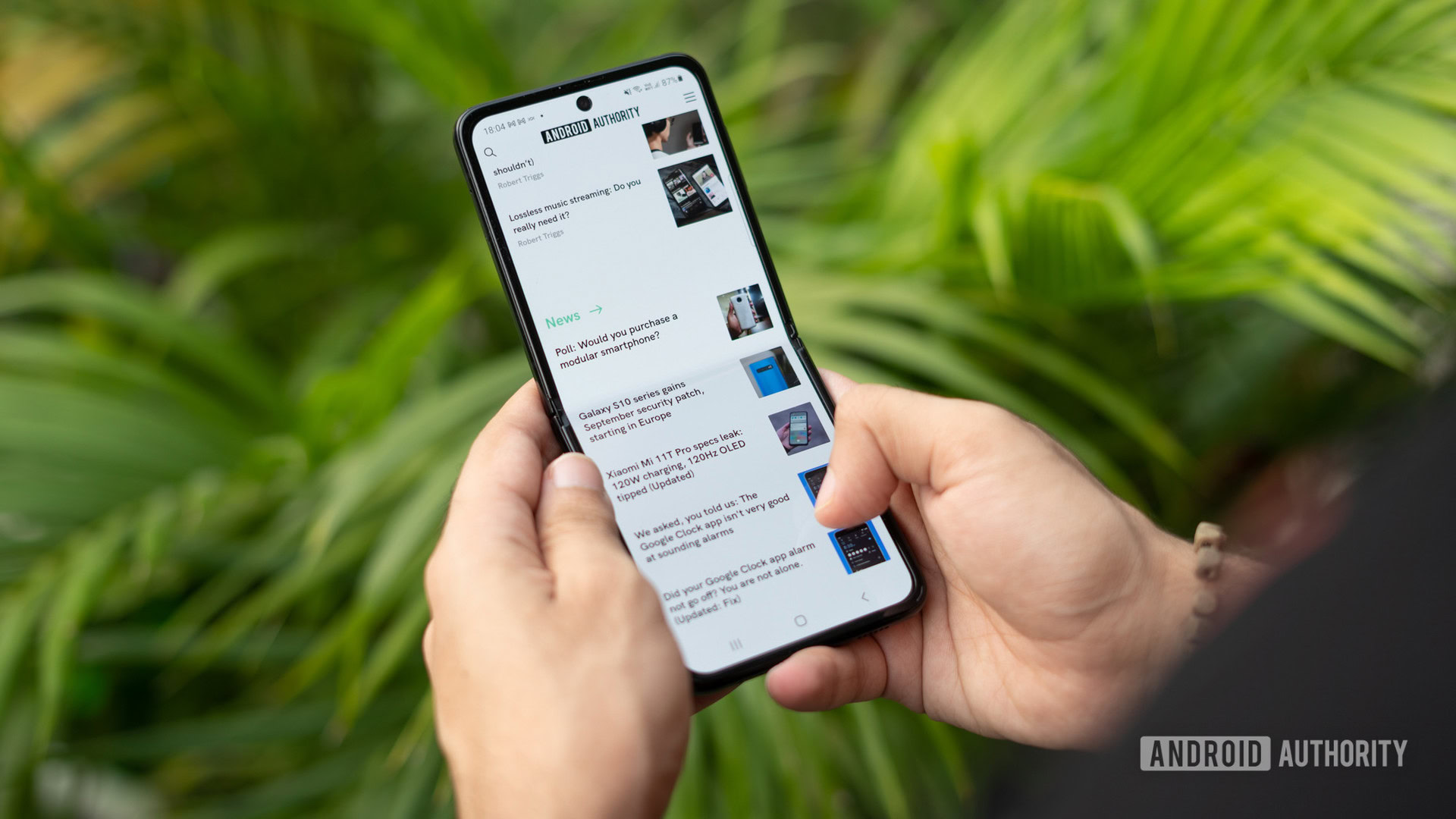
The Samsung Galaxy Z Flip 3 hasn’t lost a step since its launch. It arrived with Qualcomm’s Snapdragon 888 processor onboard — the same as you’ll find on the Galaxy S21 series. The processor still runs like a hot knife through butter, and I never noticed any lag or stuttering as I went about my days. You can also choose between 128 or 256GB of onboard storage, and both configurations offer 8GB of RAM. It’s not the 12GB you’d find on the Galaxy Z Fold 3, but it’s still more than enough for everyday tasks.
I noticed that the Galaxy Z Flip 3 gets warm under a heavy load, but it’s never accompanied by a slowdown. You might notice the temperature a bit more if you’re a power user, but it usually dissipates after a few minutes of idling. The battery life under heavy load is more of an issue, but, again, we’ll get to that sticking point in a little while.
As for connectivity, the Galaxy Z Flip 3 supports Wi-Fi 6E and Bluetooth 5.2. I never felt like I had any issues staying connected, even with multiple Galaxy accessories in the mix. I did have some problems receiving calls and texts, but that’s more likely a Verizon issue than anything else in my neck of the woods.
The best way to compare Samsung’s performance is to look at the newer Galaxy S22 series. It launched with an updated Snapdragon 8 Gen 1 processor, though you’d be hard-pressed to tell the difference in daily usage. The newer chip offers slightly better benchmark scores, but in daily use the Galaxy Z Flip 3 can easily keep up with the latest flagships.
Software and updates
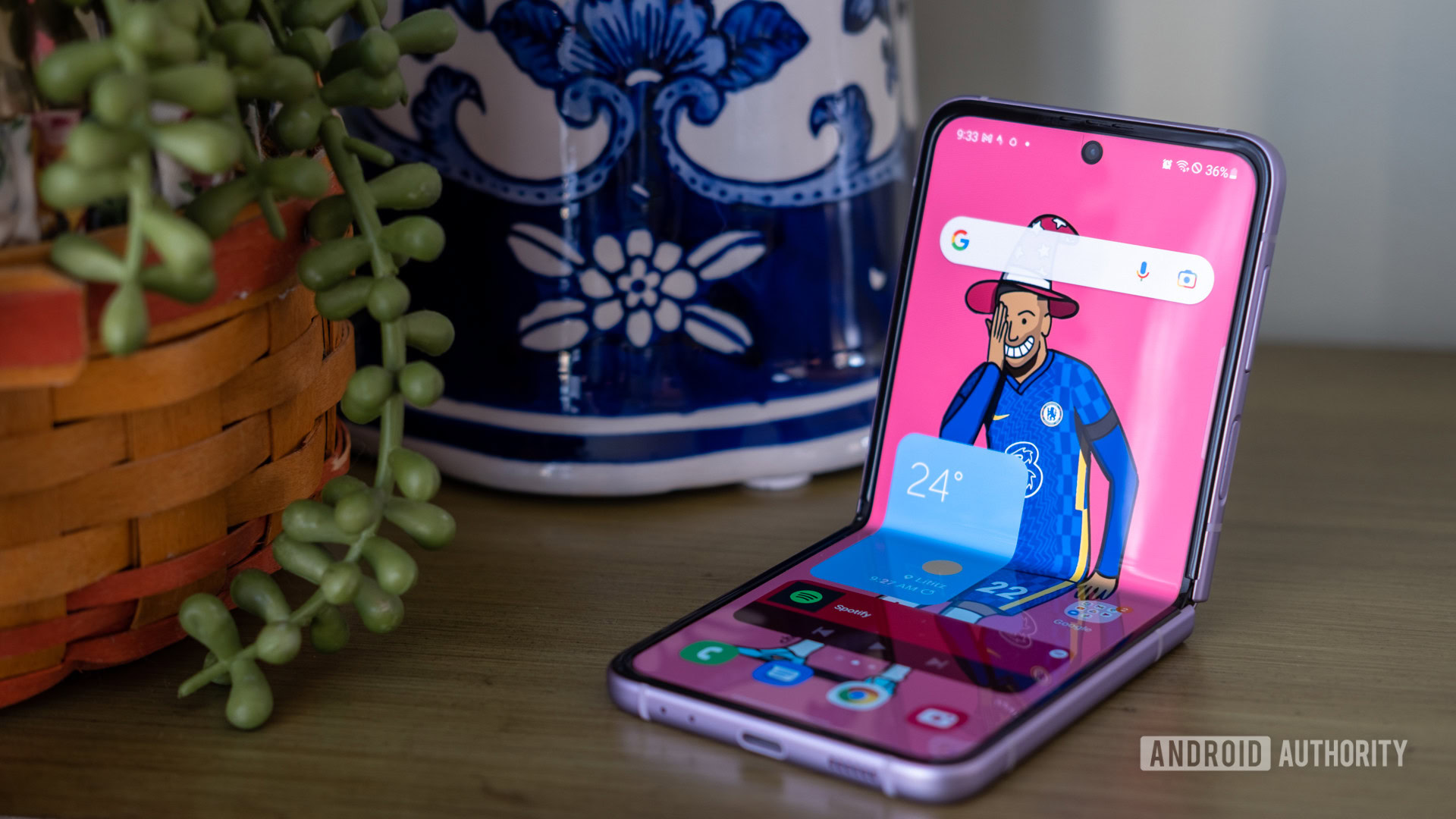
The Samsung Galaxy Z Flip 3 originally shipped with Android 11 and One UI 3.1 onboard. Samsung’s skin is not the lightest skin in the world, but it’s jam-packed with more features than you could ask for. I often reached for the Edge panel to jump into apps, and Samsung’s optimization for the folding display helps complete the experience. The camera app, for example, pushes your image preview above the fold while adding extra space for settings and controls on the bottom half. Clever touches like this make One UI feel like it was built for the foldable, rather than just slapped on top.
As promised, Samsung seems to have minimized its in-app ads for the latest version of One UI. However, the software remains imperfect. There’s still a surprising amount of bloatware for a $1,000 device, and you’ll likely have to take some time to uninstall it. You get not only a full suite of Google apps but also Samsung’s alternatives and even a few Microsoft apps on top. However, you’ll have to keep a few of Samsung’s apps around to maximize your smart home and connected device experience.
Samsung's update promise has somehow gotten even better since launch.
On top of an already impressive Android skin, Samsung’s update policy is second to none. In fact, it’s gotten even better since the Galaxy Z Flip 3 launched. The phone arrived with a promise for three years of system updates with four years of security patches. Now, Samsung has extended support to a fourth year of system updates and a fifth year of security support. We’ve already received the Android 12 (One UI 4) update, but this means the phone will go all the way to Android 15 with security updates in late 2026 before it retires.
Android 12 is all about customization options, and Samsung’s support is up there with the best of them. You can customize your color palette to match your wallpaper, and there are widgets for just about everything. Samsung’s customized app icons match the wallpaper almost too well sometimes, but that’s the beauty of multiple color palette options. I change my wallpaper often, and I haven’t found a version where the software struggles.
Read also: Galaxy Z Flip 3 problems and how to fix them
The not so good
Coming up short of the Editor’s Choice awards means we found a few flaws in our initial review to not give it our full stamp of approval. Of course, you have the usual Samsung foibles like the lack of a headphone jack, no charger in the box, and the inability to expand your storage. However, the unique form factor comes with a few faults of its own. They might not be dealbreakers, but Samsung’s shortcomings hold its foldable back from true greatness.
Battery life and charging
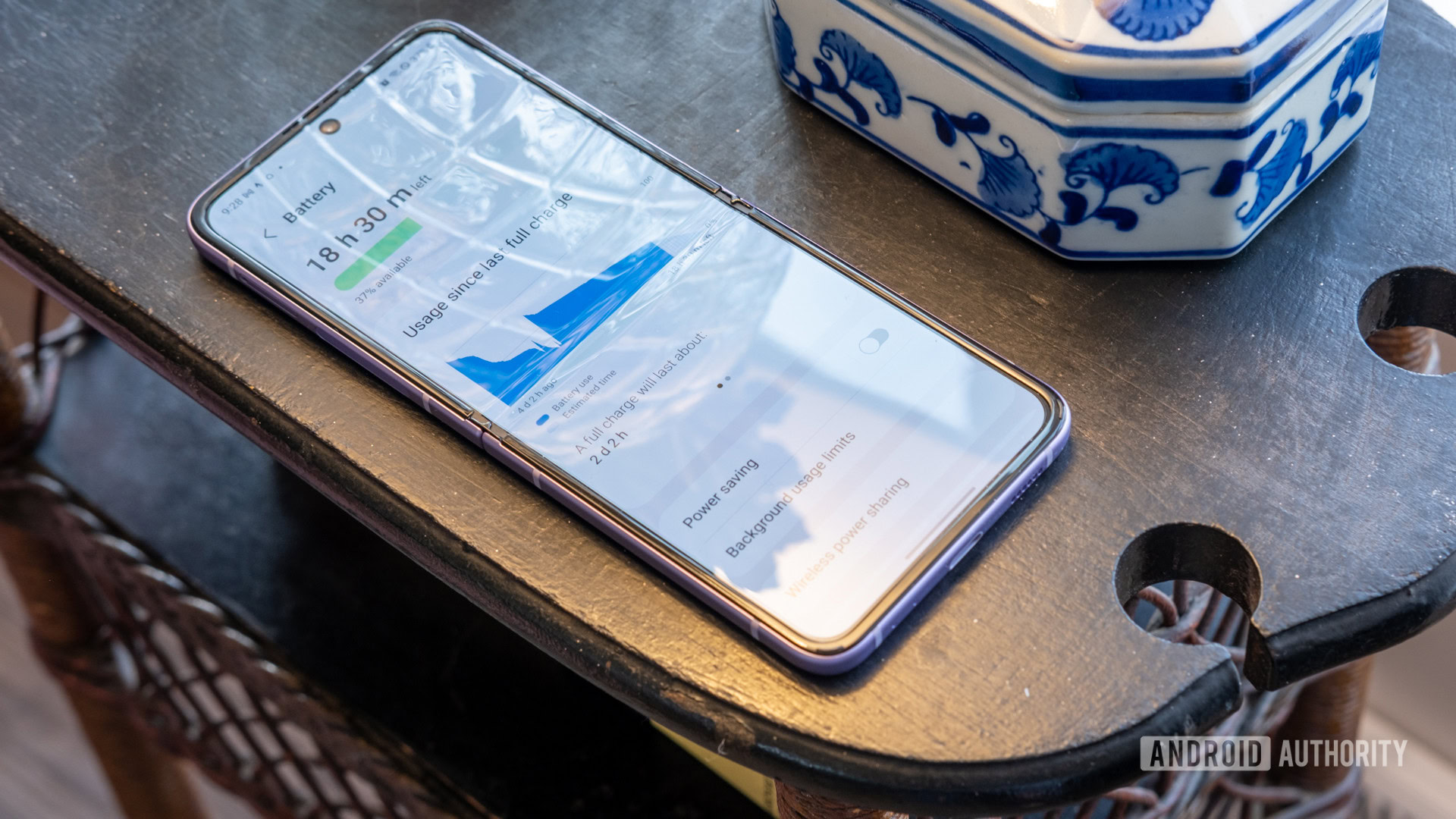
Battery life is a perfect example of the Galaxy Z Flip 3’s unique form factor working against it. A 3,300mAh cell was always going to be a tough sell, especially with traditional flagships reaching the 5,000mAh mark. The small battery is one of the holdovers from Samsung’s folding predecessors, and it’s starting to fall behind the needs of modern flagships.
I found that I could stretch the battery to last through a full day of usage, but only if I was careful. I had to keep things light and rely on the external display for most of my notifications. If I started to scroll through social media or got tied up on a long phone call, it quickly became game over for my battery life. You can always limit the phone’s 120Hz refresh rate to stretch your battery a bit longer, but you shouldn’t have to kneecap a $1,000 device.
The 3,300mAh battery can last a day if used sparingly, but the 15W charging leaves a lot to be desired.
The Samsung Galaxy Z Flip 3’s charging options paint a similar picture. While Samsung’s traditional flagships offer up to 25W wired charging, the foldable hits 15W and calls it a day. The wireless charging is even slower at 10W, so I often found myself grabbing a cable rather than choosing my charging pad.
Of course, Samsung is happy to boast about how quickly you can fill the battery — it took me about an hour and a half to get a full charge. However, this is primarily because of the small battery size rather than efficient charging. The good news is that neither the charging nor the battery life seems to have deteriorated over six months later.
See also: The best Samsung Galaxy chargers
Cameras
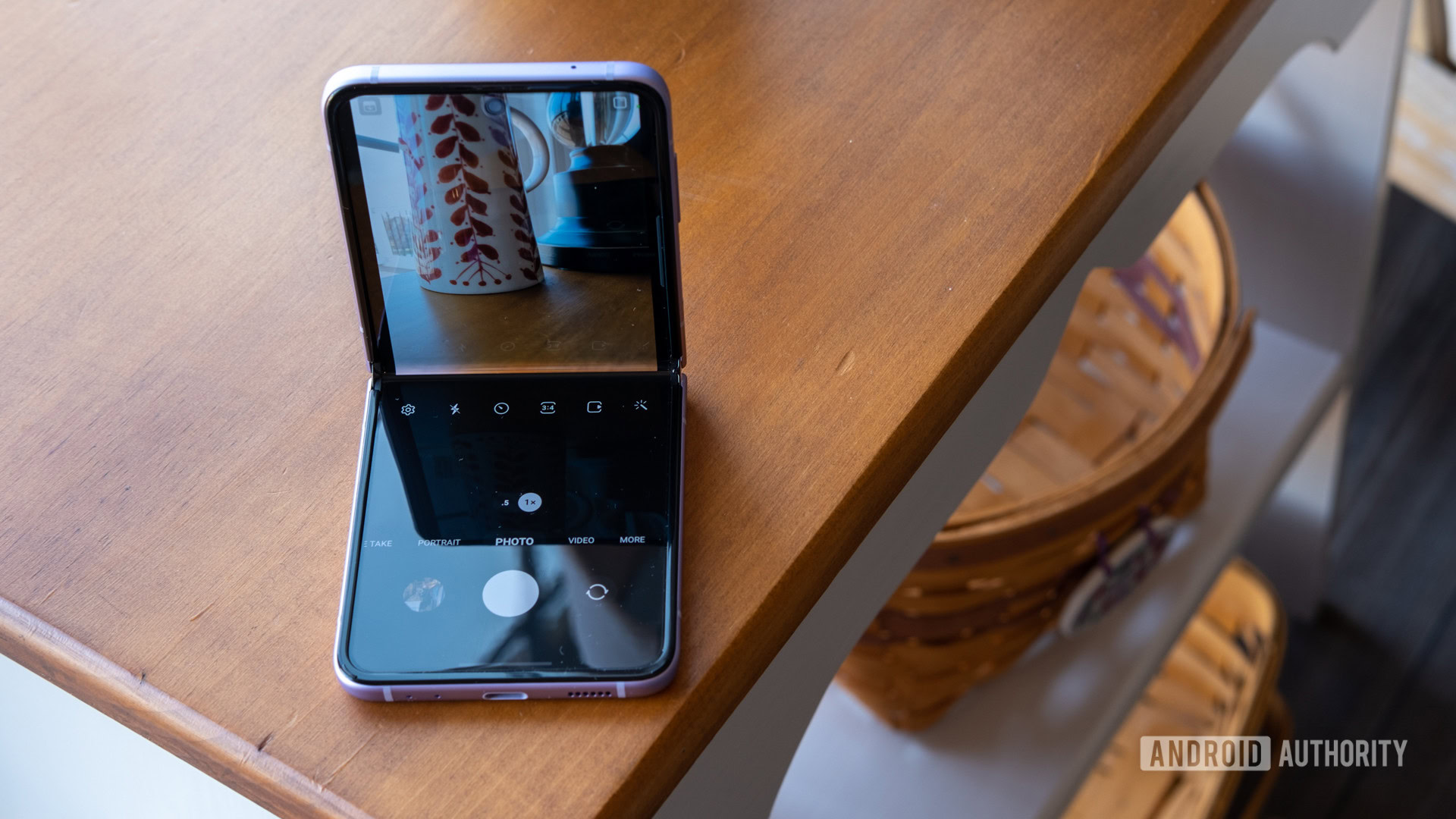
Make no mistake — the Galaxy Z Flip 3 doesn’t have bad cameras. In fact, the pair of 12MP lenses can probably capture just about everything you need them to. The wide and ultrawide options capture plenty of detail with Samsung’s saturated color profile. You also get access to handy features like Night mode, Pro mode, and slow-motion video. Even the 10MP punch hole selfie camera manages to hold its own — though it’s more fun to use the rear cameras for selfies with the preview window.
However, the camera setup finds itself in the not-so-good section because it doesn’t quite live up to the expectations for a $1,000 device. The lenses themselves are generally unchanged from the first Galaxy Z Flip, and there’s still no zoom lens.
We can blame the fact that Samsung expanded the outer OLED panel to an extent — it doesn’t leave the cameras much space to maneuver. However, we’ve seen Samsung update its rear camera setup on recent flagships with excellent results. The Galaxy S22 series swaps its 12MP wide lens for a 50MP alternative that offers a larger sensor, too (1/1.56 inches vs 1/1.76 inches on the Galaxy S21). By comparison, the Galaxy Z Flip 3 packs a 1/2.55-inch sensor.
Related: The best camera phones you can get
The difference between Samsung’s front and rear cameras is night and day. Samples taken with the rear camera offer a lot more of Samsung’s classic saturation, as is visible in the sample to the left. Adjusting to the rear OLED as a viewfinder is tricky, too — it doesn’t offer a full view if you’re holding the phone sideways. However, it’s easy to press the volume down key as a shutter button without any phone shake.
Many of Samsung’s ultrawide lenses bump out to 0.6x zoom, but not the Galaxy Z Flip 3. It stretches to 0.5x zoom, which lets you fit even more into your shot. However, I found the distortion to be slightly more noticeable, and objects sometimes look a bit more stretched.
Overall, I feel like the Galaxy Z Flip 3’s cameras deliver the goods, especially if you’re a fan of selfies. Other than the occasional saturation, I found the color recreation to be pretty much spot on. Grogu (a.k.a. Baby Yoda) shows up as green as can be in the sample image to the left, while the windmill to the right captures every leaf accurately. I also took the windmill sample on a windy day, but the shutter speed was quick enough to eliminate any blur.
Finally, I used portrait mode on the railroad crossing sign in the middle with almost perfect results. Although the blurred effect is subtle — you can change it in the Gallery app — it did miss a section of bricks close to the sign itself.
Unfortunately, the Galaxy Z Flip 3 has already had its first taste of being left behind. Samsung is opening its Expert RAW app to more devices, but this phone won’t be one of them. To use the powerful camera app, phones must have a telephoto lens capable of at least 2x optical zoom. The lack of any telephoto lens means that the Galaxy Z Flip 3 will have to sit on the sidelines with the likes of the Galaxy S21 and S21 Plus.
Samsung Galaxy Z Flip 3 revisited: The verdict
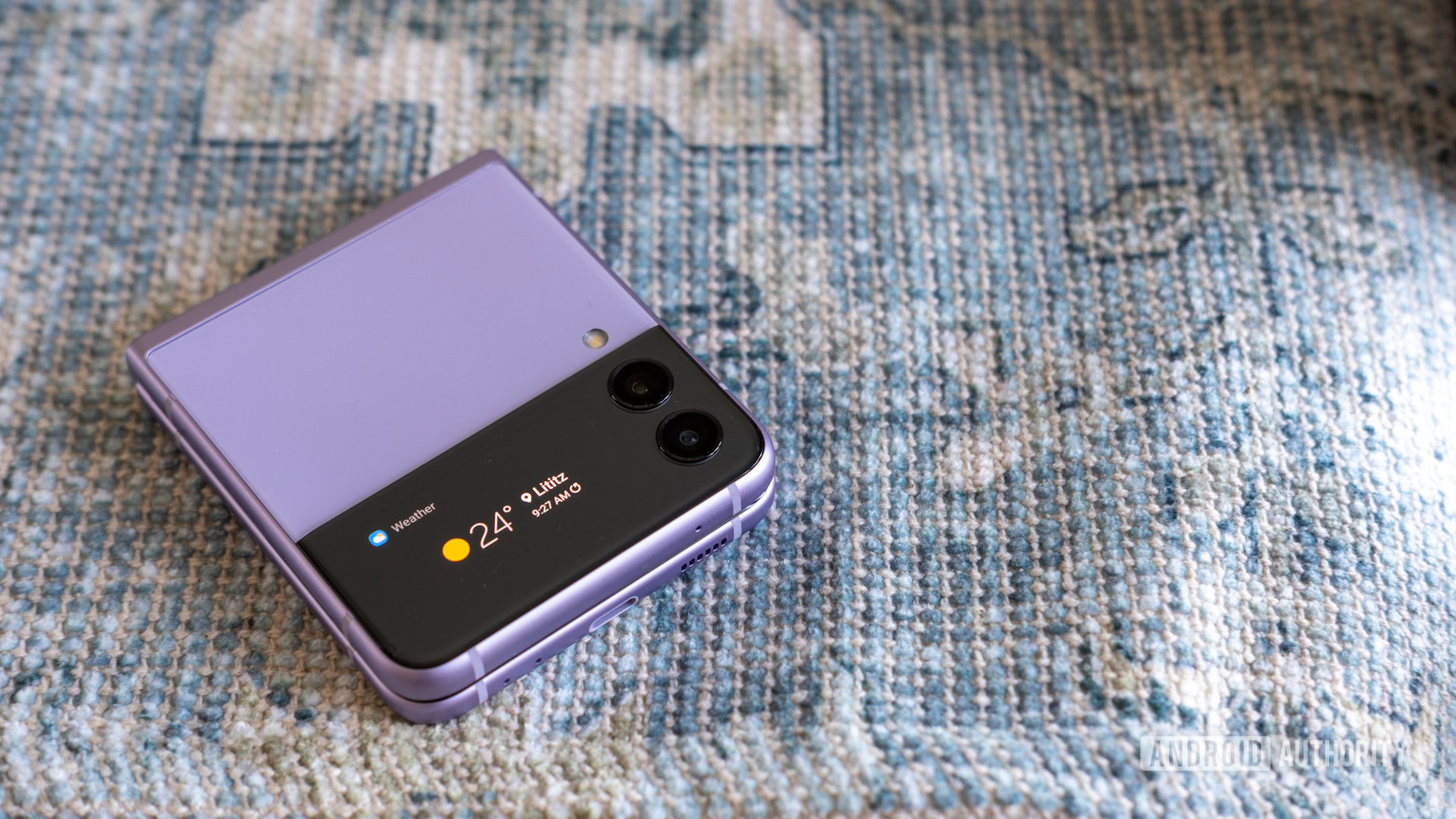
Samsung kept a few of the most limiting features from the original Galaxy Z Flip models, but the key upgrades to 2021’s Galaxy Z Flip 3 keep it ahead of the pack. The external display offers more use cases than ever, while the flagship processor gives the device enough punch to keep up. It even offers an IPX8 rating and Samsung’s most approachable price for a foldable at $999.
While it’s not perfect, the Samsung Galaxy Z Flip 3 is still the most fun I’ve had with a phone in a while even today. It feels more refined for everyday use, yet the daily experience never becomes that of “just another phone.” Even with the more recent launch of the Galaxy S22 series, the Samsung Galaxy Z Flip 3 is just as enjoyable as it was at launch, and a viable alternative to the equally-priced Galaxy S22 Plus ($999) for those looking for a unique experience.
That said, the Galaxy Z Flip 3 doesn’t always justify that asking price in some crucial areas. Its battery life and camera setup come up notably short, mainly because they remain unchanged from previous generations. The 3,300mAh cell can limit your overall experience, while the lack of a zoom lens can make getting the perfect shot tricky. The cameras you do get are a few generations behind at this point, though Samsung’s post-processing can deliver shots that will still please most users.
Is the Samsung Galaxy Z Flip 3 still a good buy?
Overall, the lack of competition gives Samsung an impressive edge in the clamshell foldable market. The Motorola Razr 5G ($1,399) is its primary competition in the US, but that device launched in September 2020 and is showing its age. HUAWEI’s P50 Pocket (€1,299) is the shiny new option, but the lack of Google apps makes it nearly impossible to recommend for most people — plus it’s China only for now. As a result, the Samsung Galaxy Z Flip 3 remains the premier option if you want a foldable phone that isn’t tablet-sized, and it’s easy to recommend even after half a year into its lifespan.
